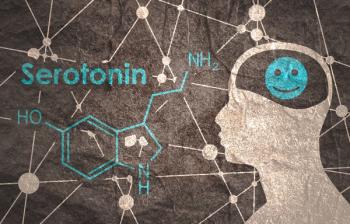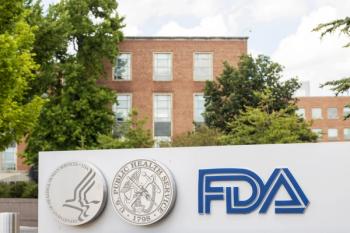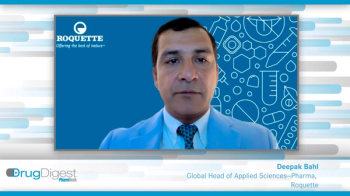
The company’s FDA-approved first generic sertraline capsules secured a 180‑day exclusivity period, highlighting strategic generic development pathways.

The company’s FDA-approved first generic sertraline capsules secured a 180‑day exclusivity period, highlighting strategic generic development pathways.

Radiopharmaceuticals are moving from their standard use of treating superficial tumors into radio drug conjugates that target tumors without impacting other cells in the body.

The program has been transitioned to a permanent pathway that is designed to support innovative tools like artificial intelligence, wearables, and biomarkers in drug development and trials.

The company presented new data from its Alzheimer’s disease research efforts across its diagnostics and pharmaceutical portfolios at this year’s AAIC.

If action is not taken within 60 days, the White House said it would “deploy every tool in our arsenal” to improve drug pricing practices for American patients.

Help us get a better picture of how new tariffs and trade policy have impacted you and your organization.

The changes, required for safety labeling of all opioid drugs, will emphasize the risks with long-term use to combat misuse and addiction.

7-OH and the leaf of the kratom plant are not analogous, but as the former is a derivative of the latter, it has opioid-like qualities that make its susceptibility to abuse concerning.

Prasad’s short FDA tenure brought stricter review standards for gene and COVID vaccines, sparking biotech concern and political backlash.

FDA’s latest whitepaper shows how scalable quality management investments in pharma reduce costs, improve reliability, and help prevent drug shortages.

The authors performed interference and enhancement testing using a formulated alkaline and acid cleaner, as well as common biopharmaceutical process residues.

Modular process design, single-use technologies, and flexible filling lines are some of the ways manufacturers can combat challenges involved in small-batch manufacturing.

Re-Vana’s drug delivery technology is designed to release treatments over a 6- to 12-month period, with the goal of reducing frequency of injections for patients.

EMA is phasing out animal testing and is asking pharmaceutical companies to use new approach methodologies.

The two companies have entered into an agreement to develop respiratory, immunology, inflammation, and cancer therapies.

Addressing human interventions to reduce their impact on contamination requires addressing broader considerations than limiting operator activities. Equipment, automation, procedural and component changes can be utilized to make the aseptic activities safer. This article offers suggestions for reducing the adverse impact of intervention throughout the aseptic process.

Cross-functional trade compliance planning is critical as pharma braces for broad 232 tariffs and shifting United States-China-India supply dynamics.

The agency has given a positive recommendation for a change in the gas propellant in Trixeo Aerosphere and Riltrava Aerosphere that will have a 1000-fold reduction in global warming potential compared to the current propellant.

Many companies face FDA complete response letters due to ongoing chemistry, manufacturing, and controls, or CMC, and analytical issues despite early regulatory guidance. Review key risk points in analytical and tech transfer to better ensure commercial readiness.

While a one-stop shop still has its advantages, sponsor companies and CDMOs are starting to see each other not as transactional relationships, but true partners with a common goal of getting drugs to patients faster.

US pharma firms face higher drug costs, delayed launches, and compliance risks from proposed sectoral tariffs, prompting urgent supply chain reviews.

Following an overhaul at ACIP, the HHS secretary took the advice of the committee’s new members, saying he was acting on guidance that dated back to 1999.

In this exclusive Drug Digest video, Deepak Bahl from Roquette and Jagruti Patel from Lonza look at strategies for accelerating early-stage development while reducing risk, approaches to speeding up timelines for complex formats without sacrificing quality, and maintaining a flexible CMC process that ensures quality.


US pharma tariffs may start low and rise, risking drug shortages, higher costs, and pressure on generics amid reshoring push.

In this episode of the Ask the Expert video series, Susan J. Schniepp, distinguished fellow at Regulatory Compliance Associates, and Siegfried Schmitt, PhD, vice president, Technical at Parexel, discuss if and when identity testing is necessary to be performed on a final product when the API is sourced from a third party.

Speedier implementation of the Post-Approval Change Management Protocol is essential for it to have a positive effect on supply security, says Siegfried Schmitt, PhD, vice president, Technical at Parexel.

Tariffs on APIs and finished drugs could take effect as early as August 1, with accelerated investigations raising urgency for supply chain planning.

Artificial intelligence and machine learning can help identify complex patterns.

The trade show is expected to draw 35,000 attendees to a show floor netting more than 1 million square feet.